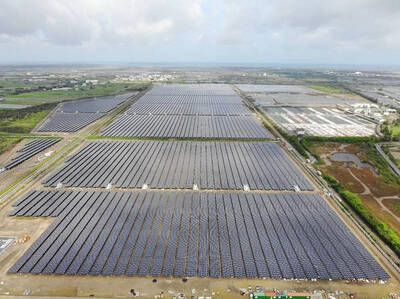“Plants, the wind, snails, frogs, birds and fishes, all display the beauty of the coast around Lugang (鹿港) and the ecology of Taiwan.”
Apt words written by master carver Huang Ma-ching (黃媽慶) to describe some of the flora and fauna found in and around the old port town located on the central-west coast of Taiwan, an area known for its tradition of woodcarving.
The National Museum of History is currently displaying more than 50 of Huang’s sculptures that cover the past decade and reflect the artist’s deep respect for the country’s environment.
Approaching the narrow hall on the second floor that houses the exhibit, the smell of camphor (樟木) — Huang’s preferred medium — serves as a palliative to the funk of Taipei’s streets.
The carvings on display are collated from Huang’s earlier series variously titled Nature, Lotus, Sea, Gourd and Transmission. The works depict the farming and fishing culture of Changhua County, where Lugang is located, and lend the exhibition a rustic feel. But nature, rather than the area’s traditional subsistence lifestyle, is Huang’s primary preoccupation.
Sponge Cucumbers (絲瓜系列) is representative of Huang’s stand-alone carvings. The intricately sculpted wavy lines of the cucumber’s body converge just below the rough stem and the single wilted leaf is suggestive of autumn. A solitary snail sits on the vegetable’s body and reminds the viewer that more than just farmers gain sustenance from agriculture. The wilted leaf at the stem’s summit is a brilliant flourish both because it hints at nature’s life cycle while at the same time demonstrating Huang’s considerable carving skill.
Huang began his career at the age of 14 as an apprentice under the tutelage of Wang Jin-xuan (王錦宣), a master sculptor who taught him to carve intricate designs on temples as well as Japanese-style latticework transoms — elements of which are discernable in his work over the past two years that show detailed scenes of insects and vegetables.
Though not as spectacular as the stand-alone works, these framed sculptures are detailed to the point of obsession.
One criticism, though minor, is that the museum director’s words are used to introduce the exhibit. A third of those words are given over to a brief history of Chinese sculpture that, though interesting, is only indirectly related to Huang’s work and the sculptures on display. It would have been far more edifying to use Huang’s own words (found in the preface to a book of Huang’s work located at the exhibit’s entrance) because he explicates more clearly his influences and goals as an artist.
Still, the museum has done an admirable job in displaying the works of one of Taiwan’s finest masters of wood sculpture.

In recent weeks the Trump Administration has been demanding that Taiwan transfer half of its chip manufacturing to the US. In an interview with NewsNation, US Secretary of Commerce Howard Lutnick said that the US would need 50 percent of domestic chip production to protect Taiwan. He stated, discussing Taiwan’s chip production: “My argument to them was, well, if you have 95 percent, how am I gonna get it to protect you? You’re going to put it on a plane? You’re going to put it on a boat?” The stench of the Trump Administration’s mafia-style notions of “protection” was strong

Every now and then, it’s nice to just point somewhere on a map and head out with no plan. In Taiwan, where convenience reigns, food options are plentiful and people are generally friendly and helpful, this type of trip is that much easier to pull off. One day last November, a spur-of-the-moment day hike in the hills of Chiayi County turned into a surprisingly memorable experience that impressed on me once again how fortunate we all are to call this island home. The scenery I walked through that day — a mix of forest and farms reaching up into the clouds

With one week left until election day, the drama is high in the race for the Chinese Nationalist Party (KMT) chair. The race is still potentially wide open between the three frontrunners. The most accurate poll is done by Apollo Survey & Research Co (艾普羅民調公司), which was conducted a week and a half ago with two-thirds of the respondents party members, who are the only ones eligible to vote. For details on the candidates, check the Oct. 4 edition of this column, “A look at the KMT chair candidates” on page 12. The popular frontrunner was 56-year-old Cheng Li-wun (鄭麗文)

“How China Threatens to Force Taiwan Into a Total Blackout” screamed a Wall Street Journal (WSJ) headline last week, yet another of the endless clickbait examples of the energy threat via blockade that doesn’t exist. Since the headline is recycled, I will recycle the rebuttal: once industrial power demand collapses (there’s a blockade so trade is gone, remember?) “a handful of shops and factories could run for months on coal and renewables, as Ko Yun-ling (柯昀伶) and Chao Chia-wei (趙家緯) pointed out in a piece at Taiwan Insight earlier this year.” Sadly, the existence of these facts will not stop the